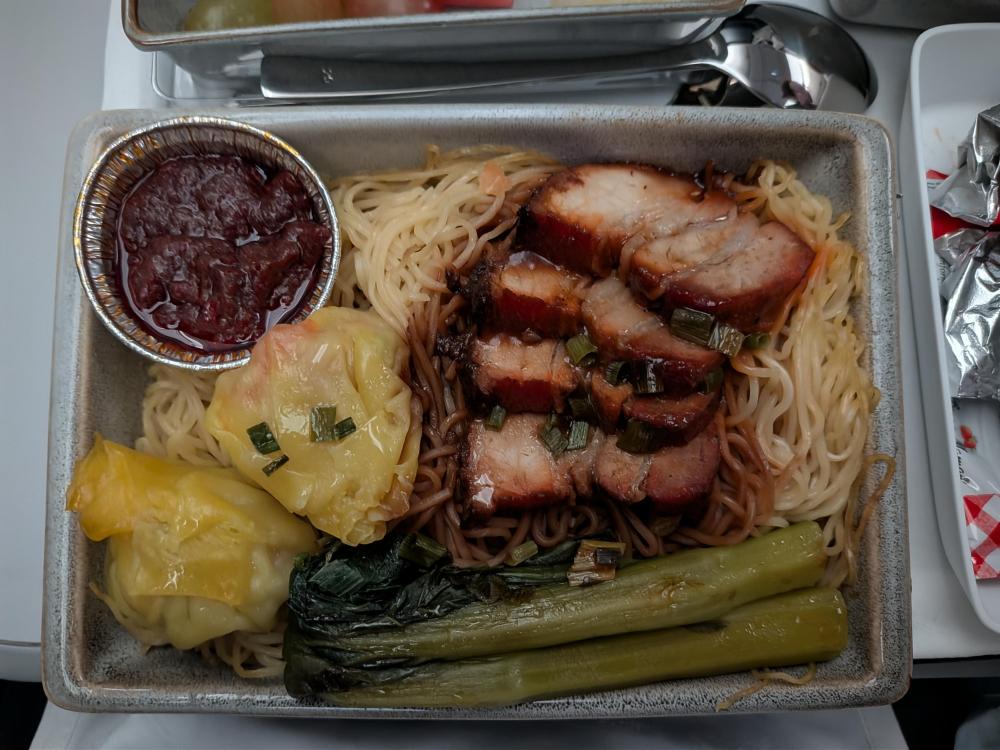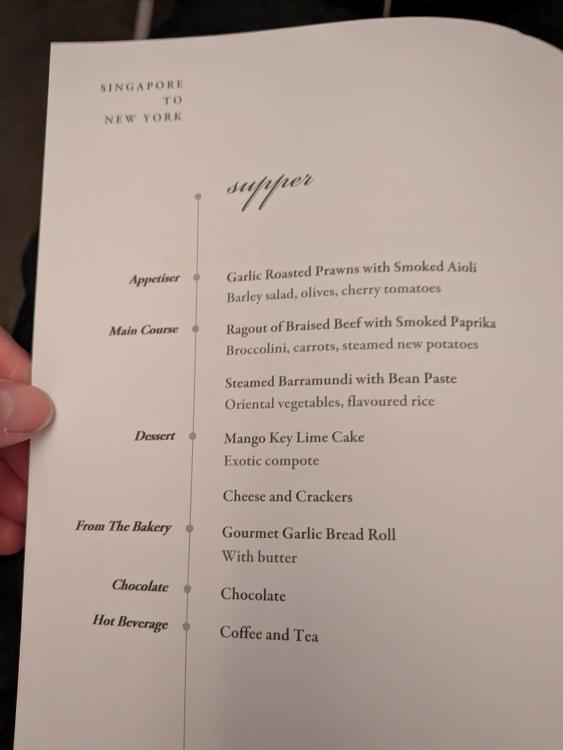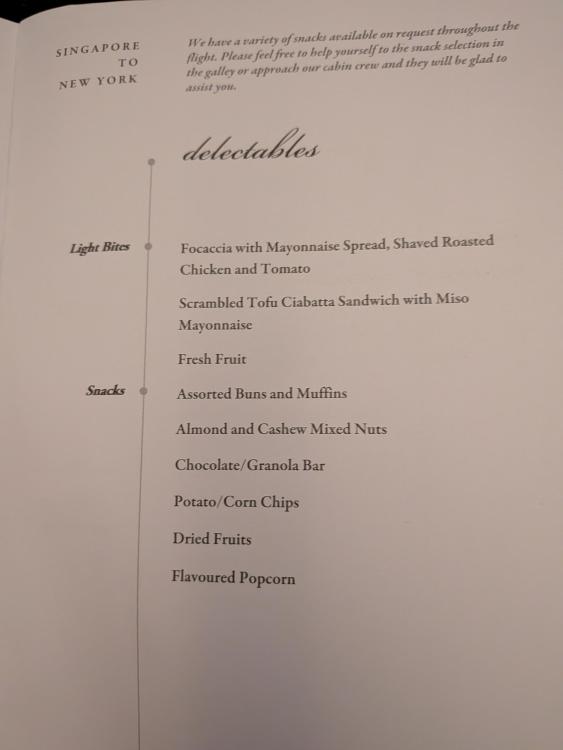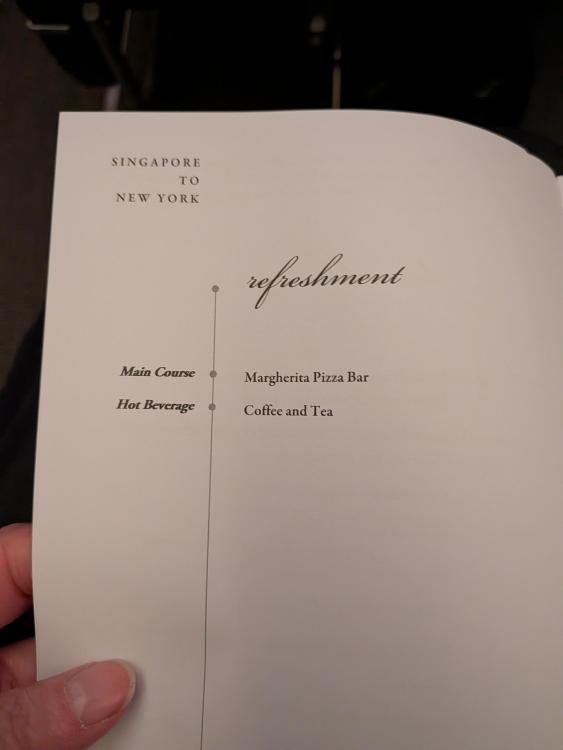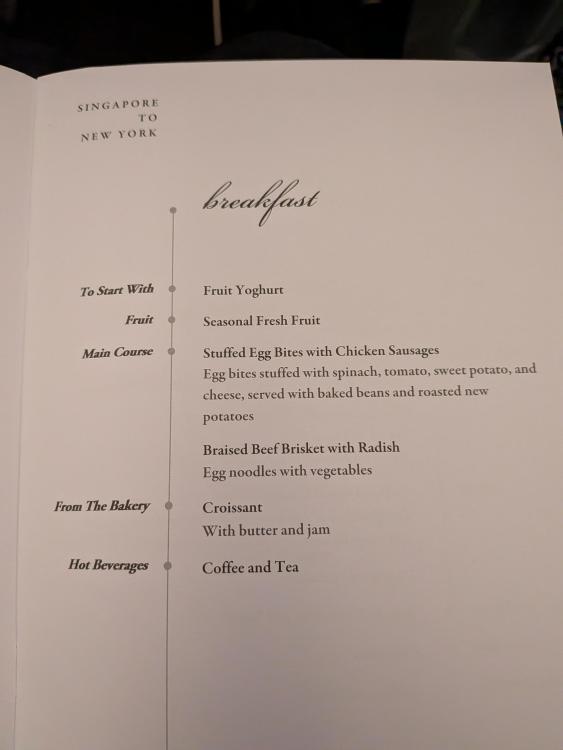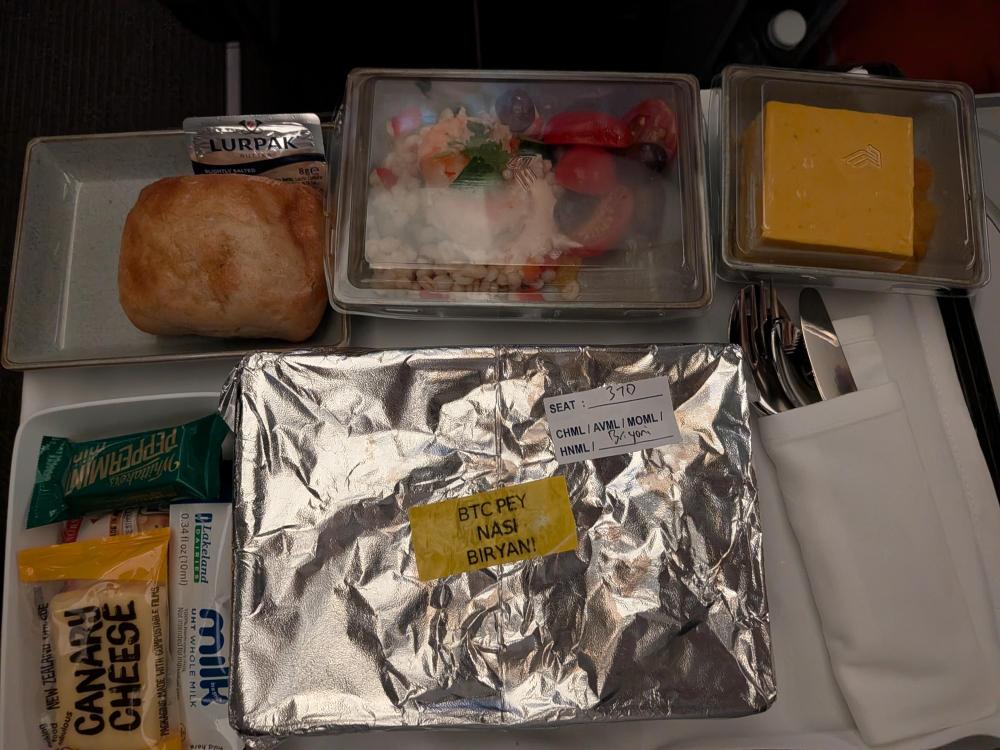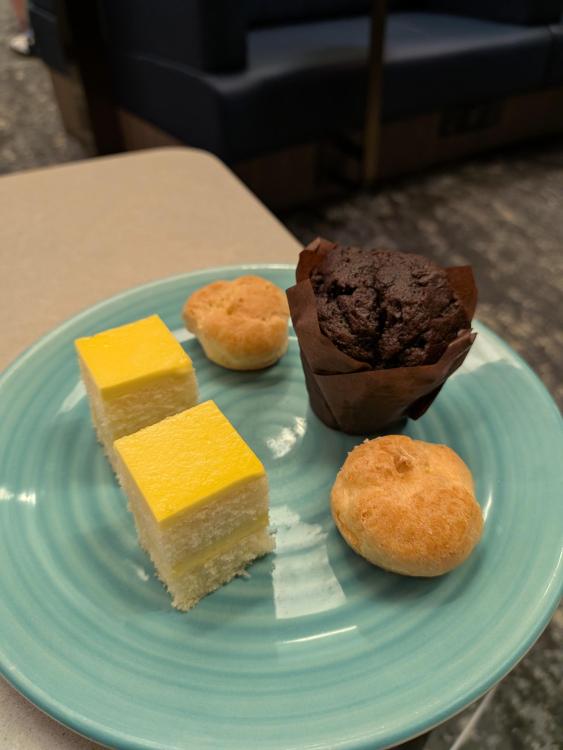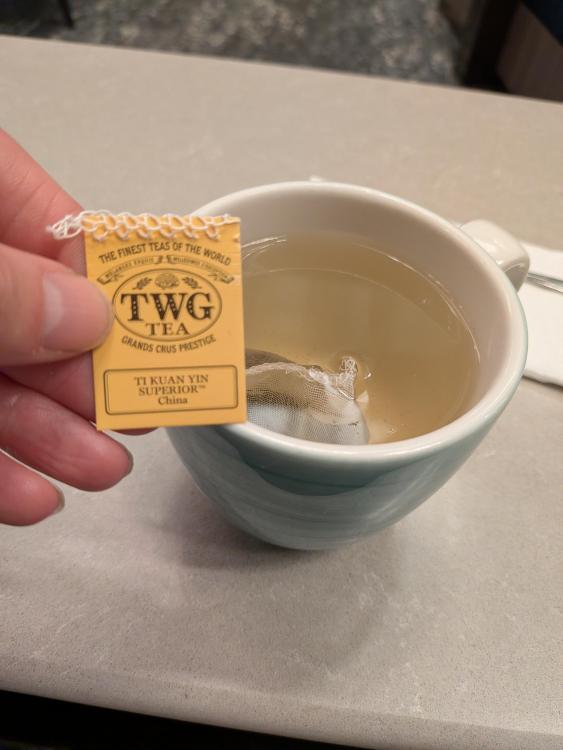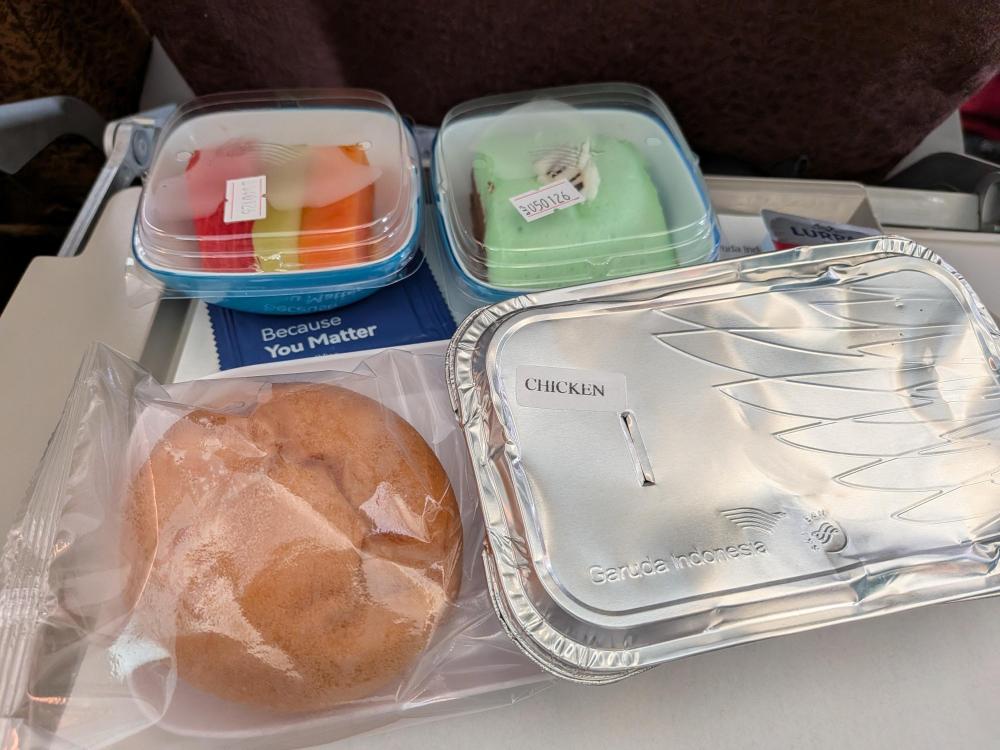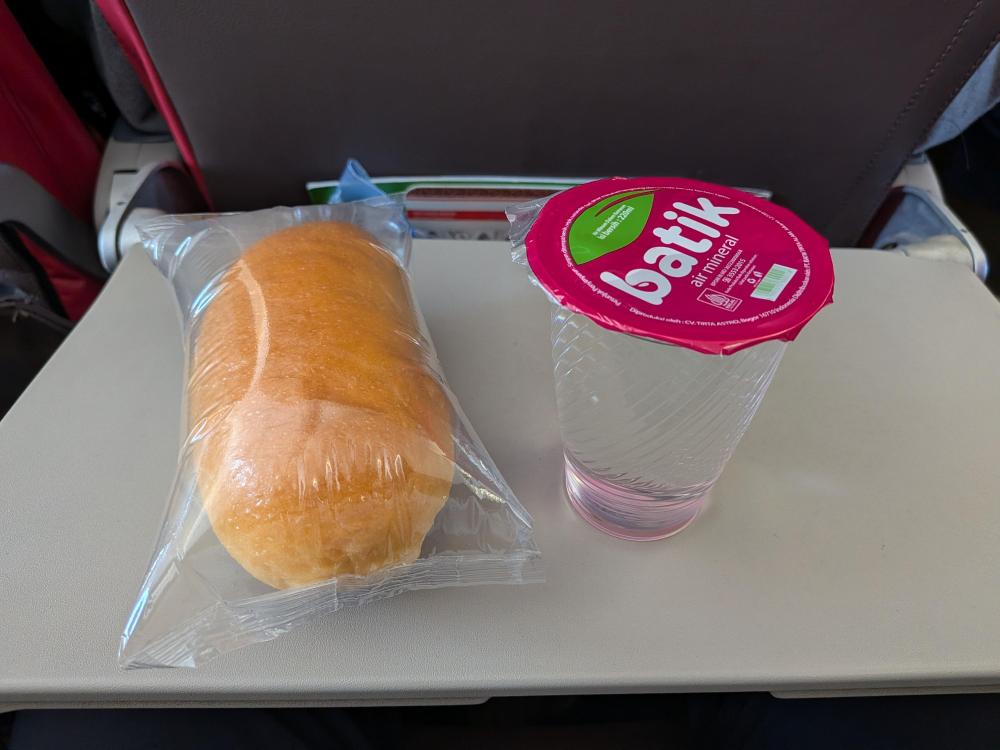
KennethT
participating member-
Posts
6,902 -
Joined
-
Last visited
Contact Methods
-
Website URL
http://
Profile Information
-
Location
New York, NY
Recent Profile Visitors
26,452 profile views
-
Airline Food: The good, the bad and the ugly
KennethT replied to a topic in Food Traditions & Culture
- 423 replies
-
- 11
-

-
Airline Food: The good, the bad and the ugly
KennethT replied to a topic in Food Traditions & Culture
Getting to the end of our eating marathon... Breakfast (it's about 10AM Singapore time): Recently flaky croissant (served warm) and Char sieu with wonton noodles. Unfortunately the Chinese broccoli was mushy which is strange - usually it's pretty good. Their sambal is really good - spicy with a bit of a roasted flavor . -
Airline Food: The good, the bad and the ugly
KennethT replied to a topic in Food Traditions & Culture
Continuing the million meal march, menus for SIN to Newark, NJ, Prem Economy.... Dinner, just served (1:30AM local time), The shrimp were nicely cooked and the aioli was definitely smoky. The bread actually had bread texture and was stuffed with garlic butter. The cake seemed to be the same mango cake they had in the lounge. Chicken biryani from the Book the Cook menu (ordered in advance). As usual, I wish I could get this in NY - the rice isn't oily at all, tons of whole spices, tender spiced chicken.- 423 replies
-
- 12
-

-

-
Airline Food: The good, the bad and the ugly
KennethT replied to a topic in Food Traditions & Culture
Some snacks in the lounge... you can't have tea without snacks... Chocolate muffin, vanilla cream puff, mango mousse cake -
Airline Food: The good, the bad and the ugly
KennethT replied to a topic in Food Traditions & Culture
In the SilverKris lounge in SIN (we got gold status from our points!), tons of food options - too bad we're still stuffed from dinner - but it's got some nice seating to while away the time, plus they have TWG Tea!!!!! Which is great since we need to stay up for at least another 4 hours... A beautiful, delicate Ti Kuan yin. Also on offer is a dedicated Laksa station, various dim sum, savory dishes, serve yourself cocktails like G&T, plus a bar, various wines, etc... -
Airline Food: The good, the bad and the ugly
KennethT replied to a topic in Food Traditions & Culture
Not yet... I usually start writing it a few days after I get home and can go through all the photos (mine and my wife's). I'm currently in the Singapore airport waiting for our last flight, so I should be home around 20 hours from now, and will then sleep all day and get ready for work on Monday. Trip report should start around then. Keep an eye out in the SE Asian Dining section. -
Airline Food: The good, the bad and the ugly
KennethT replied to a topic in Food Traditions & Culture
Also, not shown was lunch in the Bali airport around 1PM.... -
Airline Food: The good, the bad and the ugly
KennethT replied to a topic in Food Traditions & Culture
Next up, Garuda Airlines (Indonesia's national airline), Bali to SIN, 2.5 hour flight departing around 3PM: Trio of melon, some kind of mousse cake which was super light and airy. Choice of chicken with rice or seafood noodle. Stewed chicken (tasted like 5 spice). I didn't eat much of it since we were going to have dinner in one of the hundreds of restaurants in Singapore's airport (including the Jewel which is outside the transit area). This is fine since we needed to collect our luggage and check in with Singapore Airlines so we had to go through immigration anyway (takes 5 seconds with their autogates). -
Airline Food: The good, the bad and the ugly
KennethT replied to a topic in Food Traditions & Culture
First up on our 35+ hour journey home.... Same budget airline, same 1 hour flight, same sweet roll stuffed with chocolate paste. -
If there were any leftovers, I'd humbly request that you send them to me via FedEx....
-
Either that's a shit load of truffle butter or a really small plate!
-
Seconded.... I learned the hard way!!!!
-
Airline Food: The good, the bad and the ugly
KennethT replied to a topic in Food Traditions & Culture
Yeah, there were a lot of varieties. Too bad I can't bring any home... But I'll be in Changi for a few hours next week, but I don't know if I'll have the stomach space by then! -
When I was a kid, astronaut ice cream was all the rage...















